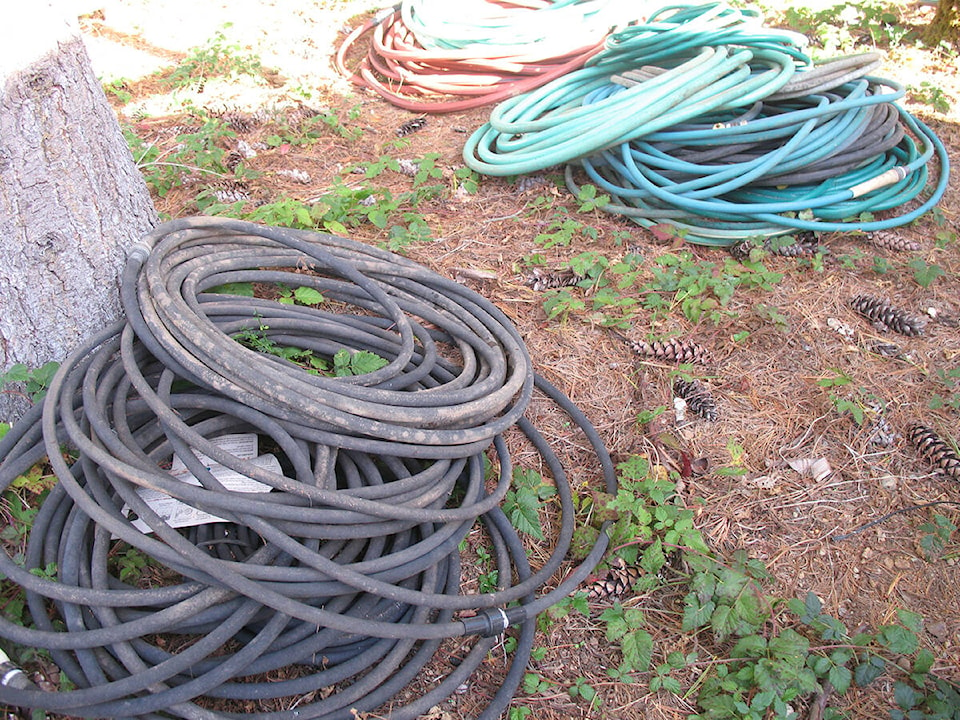By Mary Lowther
Having lived in Mesachie for a mere 15 years we are relative newcomers. That being said, we have noticed that the precipitation we enjoy now in the temperate rainforest seems to be somewhat less than when we arrived. Not only is it not raining as much during the summer months, it is also not snowing during the winters enough to provide the slow spring thaw that supports natural runoff. This has resulted in water shortages when our gardens most require irrigation.
One way to deal with this is to plant further apart to allow for more root space, but this might reduce the size of your harvest. A better alternative is soaker hoses connected to a timer designed to deliver water to the desired plants with a minimum of waste. They don’t come cheap, but with ever more frequent watering restrictions they make the difference between having a crop or not. They do, however, require regular maintenance.
I take care of my hoses at the end of watering season. I don’t want to buy a new timer every year either so I take it off the tap, remove the batteries, let it drain and store it inside once it dries. The hard part comes next spring when I try to remember where I put it.
Once the autumn rains come I remove the soaker hoses from the garden to protect them from freezing and UV rays; this is best done on a warm, dry day so the hoses will be malleable and quicker to dry. When they’re disconnected I remove the end caps so water will drain out as I roll them up, then join the ends together to keep bugs from nesting inside. I lay the hoses flat in separate piles: soaker hoses in one and regular hoses for connecting the soaker hoses in another, and when they’re all done I lay them on the ground in a shady corner of the yard and cover them with a tarp. I’ve given up thinking that I’d bring them inside because they leak a bit. Outside on the ground and covered, they can drain as much as they like and shouldn’t develop mould.
It has taken a number of years to accumulate these hoses, and since I want to protect my investment I handle them carefully so they last as long as possible. I’m careful not to cut into them when I weed in the summer, which is far less work than when a sprinkler is used because weeds (and bugs) avoid the hot, dry soil between hoses. They usually last longer than their guarantee when I dry, wind up and store them under cover to keep them from cracking and bending.
I’ve tried a couple of recommended ways to store hoses, such as winding them up inside a large tire or hanging them on a hose hanger, but neither method worked out for me. The tire method involves cutting out the soft side of the tire. The writer insisted this only takes five minutes, but he lied. Then, when I wound the hose around the inside, it kept bending and kinking. Besides, the tire was heavy, unwieldy and required even more storage space. The hose hanger didn’t work either because the weight of the hose pulled it out of shape and the part hanging over the top was squeezed flat and developed kinks. I just lay the coiled hoses on the ground in an out-of-the-way place and cover them with a tarp until it is time to use them again.
Please contact mary_lowther@yahoo.ca with questions and suggestions since I need all the help I can get.
